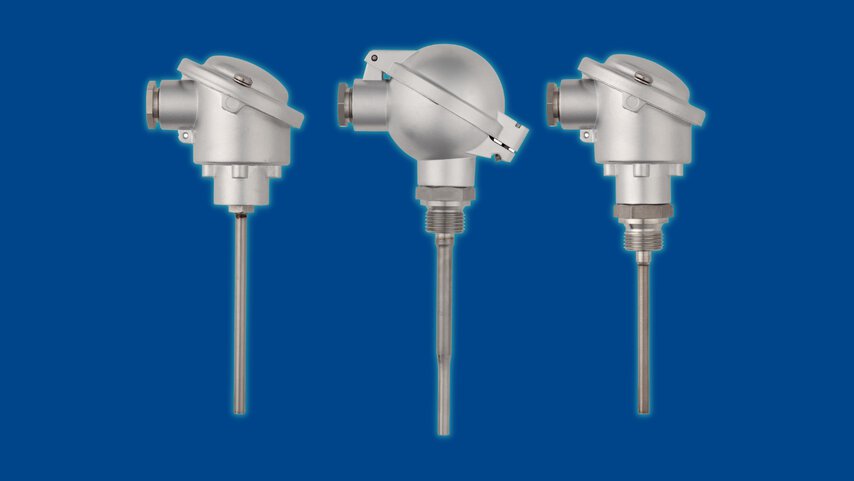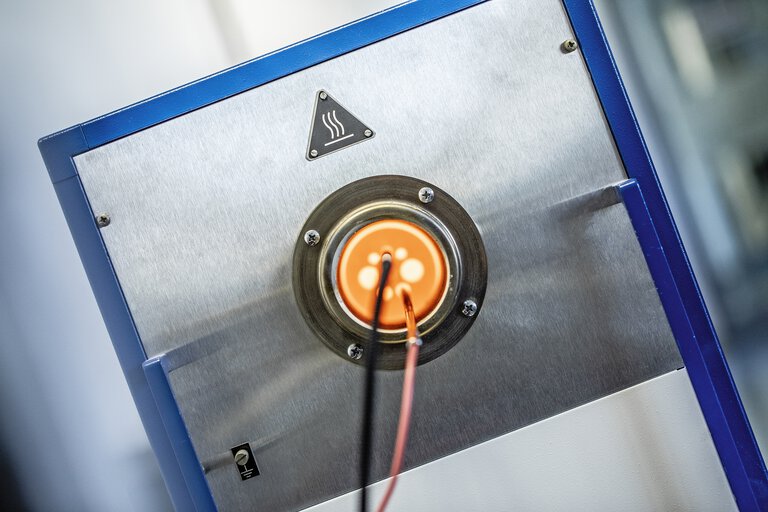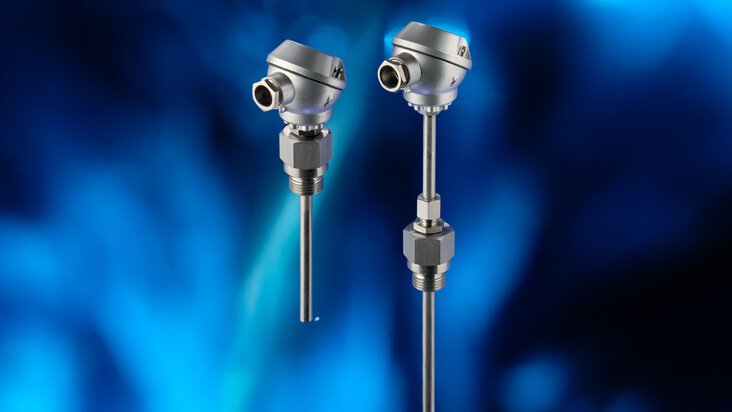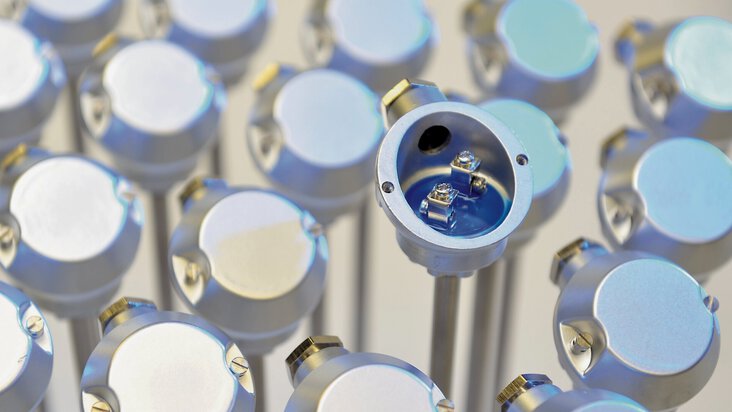

15 Most common thermocouple problems and solutions [COMPLETE GUIDE]
The thermocouple is one of the most popular temperature sensors. Despite its high reliability, it can indicate erroneous measurement values for various reasons. In this post, we discuss up to 18 of the most common errors and how to prevent and solve them. Check out our complete guide!
Thermocouples – what are they?
Thermocouples (thermoelectric sensors) are temperature sensors that consist of two wires made of different metals joined together at one end to form a measuring weld. The free ends of the thermocouple measure the voltage that arises when the weld is heated or cooled. It is proportional to the temperature difference between the measuring weld and the free ends - the terminals.
Thermocouple temperature measurement errors
Thermocouples are widely used in many industrial applications because they are robust, relatively inexpensive, have sufficient accuracy for most applications and do not require an external power supply. Thermocouple sensors are also valued for their wide measurement range - depending on the materials used, a thermocouple can measure temperatures from -200°C to +1250°C. However, for a variety of reasons, thermocouple measuring errors can occur.
How to check if a thermocouple is working?
The simplest way to check that a thermocouple is working correctly is to simulate a measurement using a millivolt generator that plugs directly into the indicating device. Set the values given in the voltage series and compare the readings with the assigned temperatures. This is the quickest way to determine whether the set linearisation or measurement range has been selected correctly.
For a quick test, isolate a piece of compensation wire, twist the wires at one end and plug in the indicating device. The twisted wires form a thermocouple with which, by heating the joint, you can check the basic operation of the device.
If it is not working properly, check thermocouple failure reasons:
Selection of the wrong type of thermocouple on the transmitter
Problem: We often encounter that the wrong type of thermocouple has been selected on the transmitter. This type of error happens because there are many different types of these sensors, e.g. type K, type J or type S thermocouples for high temperatures.
You need to be careful as each has a different range, accuracy and electrical output. Choosing the wrong type of thermocouple when making settings to the transmitter during installation can cause erroneous measurements.
Solution: different types of thermocouple sensors are colour coded accordingly. Always check the colour code on the thermocouple jacket before setting up the transmitter.

Colour coding of thermocouples - sheath and compensation wires
Incorrect thermocouple connection – reversed polarity
Problem: The most common error when connecting a thermocouple is that the polarity of the lead wires is reversed or altered. In this case, the measured temperature will be incorrect due to the temperature difference between the two ends of the leads.
Such mistakes happen because intuitively expect the red wire to be positive. However, red wire in thermocouple cables typically are negative.
Solution: Double-check the thermocouple connection and, if necessary, swap the thermocouple lead wire
Other possible connection errors and their causes
-
The indicating instrument indicates these mperature of the room
Damaged thermocouple or cable
-
Indication consistent as to value, but with a minus sign
Swapped polarity in the pointing device.
-
The indicated temperature is clearly too high; drift indication
a) Swapped polarity of the equipotential bonding wire on the connection head (two additional thermocouples are created as a result of swapping wires)
b) Incorrect expansion line
-
Indication is clearly too high or too low
a) Incorrect linearisation in the pointing device.
b) Incorrect expansion line
-
Indication is too high or too low by a fixed value
Incorrect comparison point temperature
-
Indication correct, but slowly drifting
The temperature of the comparison point is unstable or has not been measured.
-
The display contains an error of 20 to 25 °C
Linearisation of an L-type thermocouple as a J-type or vice versa.
-
When one pole of the thermocouple is disconnected, a value is still indicated
a) Electromagnetic voltages interfere with the input cable
b) Due to the lack of galvanic separation and insufficient insulation, interference voltages have appeared, penetrating e.g. through the furnace insulation.
-
Even after disconnecting both poles of the thermocouple, a high value is still indicated
a) Electromagnetic interference interferes with the input cable
b) Galvanic voltages, caused by e.g. damp insulation, interfere with the equalizing cable
Temperature variations around the reference junction
Problem: Keep in mind that thermocouple measures temperature differentials in actual temperature, not the absolute temperature. Therefore, nearby devices such as fans can cause temperature fluctuations and, therefore, erroneous readings.
Solution: Do not keep fans or other sources of cooling or heating near the reference junction (cold junction). Also make sure the thermocouple connector is insulated, as this helps protect it from extreme temperatures.
Thermocouple grounded in more than one place
Problem: If a thermocouple is grounded in more than one place, a negative phenomenon called 'ground loop' can occur. This involves current flowing through the thermocouple from one ground to another, resulting in electromagnetic fields. These fields interfere with radio frequencies, which in turn affects the accuracy of the temperature measurement.
Solution: Ground either the transmitter (connection head) or the controller/recorder, but not both at the same time.
Differences in metal alloys of thermocouple wires
Problem: The percentage of metal alloys from which thermocouple wires are made can vary slightly from batch to batch. Some errors in the accuracy of thermocouple sensors, due to the manufacturing process, are inevitable. Typical accuracy is ±1-2°C, which is sufficient for most industrial applications.
Solution: If your application requires exceptionally high accuracy, order thermocouples with wires of special limit . They are manufactured to the highest tolerances to keep impurities as low as possible and consistency in alloy proportions as high as possible.
Also take care to buy thermocouples from trusted suppliers. At JUMO, we take care to control the quality of our thermocouple sensors in order to reduce the occurrence of wire alloy problems as much as possible.
Aging of thermoelectric sensors
Problem: Like any device or machine, a thermocouple used for several to several years wears out. These devices are exposed to extreme temperatures, pressures and other forces that inevitably cause them to age.
Solution: Replace the worn-out thermocouple with a new one. Regular maintenance helps to slow down the ageing process of the measuring equipment
- ${title}${badge}


